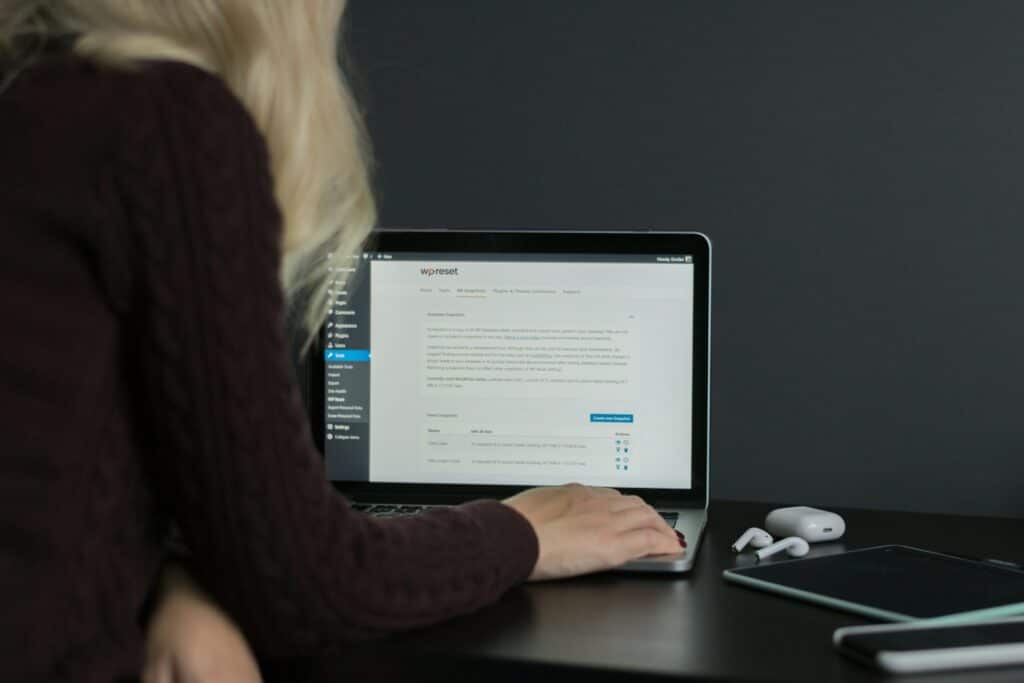As web designers and developers, we always aim for a crisp, visually appealing website that functions smoothly. However, in this pursuit of perfection, we often overlook an essential factor – accessibility. When we talk about an inclusive user experience, it refers to ensuring that your WordPress website is accessible to all users, including those with disabilities.
Making your WordPress website accessible doesn’t just mean adding alternative text to images or using high-contrast color schemes, although those are indeed part of it. It’s more about embracing the diversity of all users and making your website a welcoming place for everyone.
Think of it as a way of extending your hospitality to all visitors, regardless of their abilities. After all, the internet was designed to be a platform for everyone, so why not our websites? Plus, making your website accessible isn’t just a nice thing to do; it can also boost your SEO, improve your brand image, and even help you avoid potential legal complications.
So, are you ready to dive in and learn some simple, yet effective ways to enhance the accessibility of your WordPress website? Let’s make the internet a more inclusive place, one website at a time.
Key Strategies for Enhancing Accessibility on Your WordPress Site
1. Techniques and Best Practices for Enhancing WordPress Website Accessibility
To promote an inclusive user experience on your WordPress site, consider adopting the following accessibility techniques and best practices:
- Structure Your Content with Proper HTML Semantics: Use appropriate heading tags (H1, H2, H3, etc.) to create a logical hierarchy, and implement descriptive title tags and meta descriptions to convey your content’s purpose. Ensure that lists, quotations, and other elements are formatted correctly using proper HTML tags.
- Use Descriptive Alt Text for Images: Include accurate, concise alt text for all images on your site to provide descriptions for users who rely on screen readers. Descriptive alt text ensures that visually impaired users can understand the content and context of your images.
- Employ Accessible Design Elements: Maintain sufficient colour contrast between text and background, choose easily legible fonts, and adjust font sizes for better readability. Avoid using colour alone to convey information, and ensure that interactive elements like buttons and links are easily distinguishable and accessible.
- Ensure Keyboard Navigation: Ensure that your website can be navigated using a keyboard alone, enabling users with mobility impairments to access your content without a mouse. Make sure that your site provides visible focus indicators and logical tab order for an intuitive keyboard navigation experience.
2. Assessing Your Website’s Current Accessibility and Making Improvements
Evaluate your WordPress site’s current accessibility to identify areas for improvement:
Conduct a Manual Accessibility Check: Navigate and interact with your website only using a keyboard, and check the usability of elements like menus, forms, and links. Verify that your site is accessible on various devices, including desktop computers, tablets, and smartphones.
- Use an Automated Accessibility Testing Tool: Utilise an automated testing tool like WAVE (Web Accessibility Evaluation Tool) or Axe to check your website for potential accessibility issues. These tools can quickly analyse your site’s code and provide specific recommendations for enhancing accessibility.
- Consult the Web Content Accessibility Guidelines (WCAG): The WCAG provides a set of guidelines for creating accessible web content. Familiarise yourself with WCAG standards and ensure that your website complies with the guidelines to provide an inclusive user experience.
- Incorporate User Feedback: Collect feedback from your website’s visitors, including those with disabilities, to gain insights into potential accessibility barriers and implement improvements accordingly.
3. Top Plugins to Assist in Improving Your WordPress Website’s Accessibility
Leverage the power of WordPress plugins to make your site more accessible:
- One Click Accessibility: This user-friendly plugin focuses on improving the accessibility of your website’s front-end. With options like enabling a larger font size, adjusting contrast, and providing underlined links, One Click Accessibility can help address several accessibility issues.
- WP Accessibility Helper: This comprehensive plugin offers numerous features aimed at enhancing your website’s accessibility, including proper header tags, keyboard navigation, and tools for users to customise their own viewing experience.
- Accessible Poetry: This plugin adds several features to improve the accessibility of your site’s content, such as a dyslexic reading mode, integration with Google Translator, and contrast switching capabilities.
- UserWay Accessibility Widget: Featuring compliance with WCAG, ADA, and EU accessibility standards, this plugin adds a simple accessibility widget to your site that users can interact with to adjust font size, contrast, and more.
4. Partnering with a Professional WordPress Maintenance Service for Ongoing Accessibility Support
Maintaining an accessible website requires continued effort and regular updates. To ensure your WordPress website remains inclusive, work with a professional maintenance service:
- Expert Guidance and Assistance: Gain access to experienced professionals who can provide ongoing advice and support for enhancing the accessibility of your site.
- Regular Website Audits and Updates: A maintenance service will routinely assess your site’s accessibility, implement any necessary adjustments, and ensure that your site stays up-to-date with evolving accessibility standards.
- Ongoing Performance and Security Monitoring: By partnering with a maintenance service, you’ll benefit from continuous performance and security monitoring, making certain your website remains secure and maintains optimal performance for all users.
Taking Your WordPress Site to the Next Level with Enhanced Accessibility
Remember, an accessible website is not only about aiding disabled users but making your site better for all users. The process might seem complex at first, but with time and commitment, it becomes much easier. Make the commitment today and start your journey towards a more accessible and user-friendly WordPress website!
From implementing accessible design elements and keyboard navigation to utilising accessibility-focused plugins, every effort you make to enhance your website’s inclusiveness can contribute to a more equitable digital landscape.
Let our expert team at ThriveWP help you create an accessible, user-friendly WordPress site that caters to every visitor, regardless of their abilities or impairments. Get in touch with us today to discover how our comprehensive WordPress maintenance services can support you in your journey toward a more inclusive online presence.






